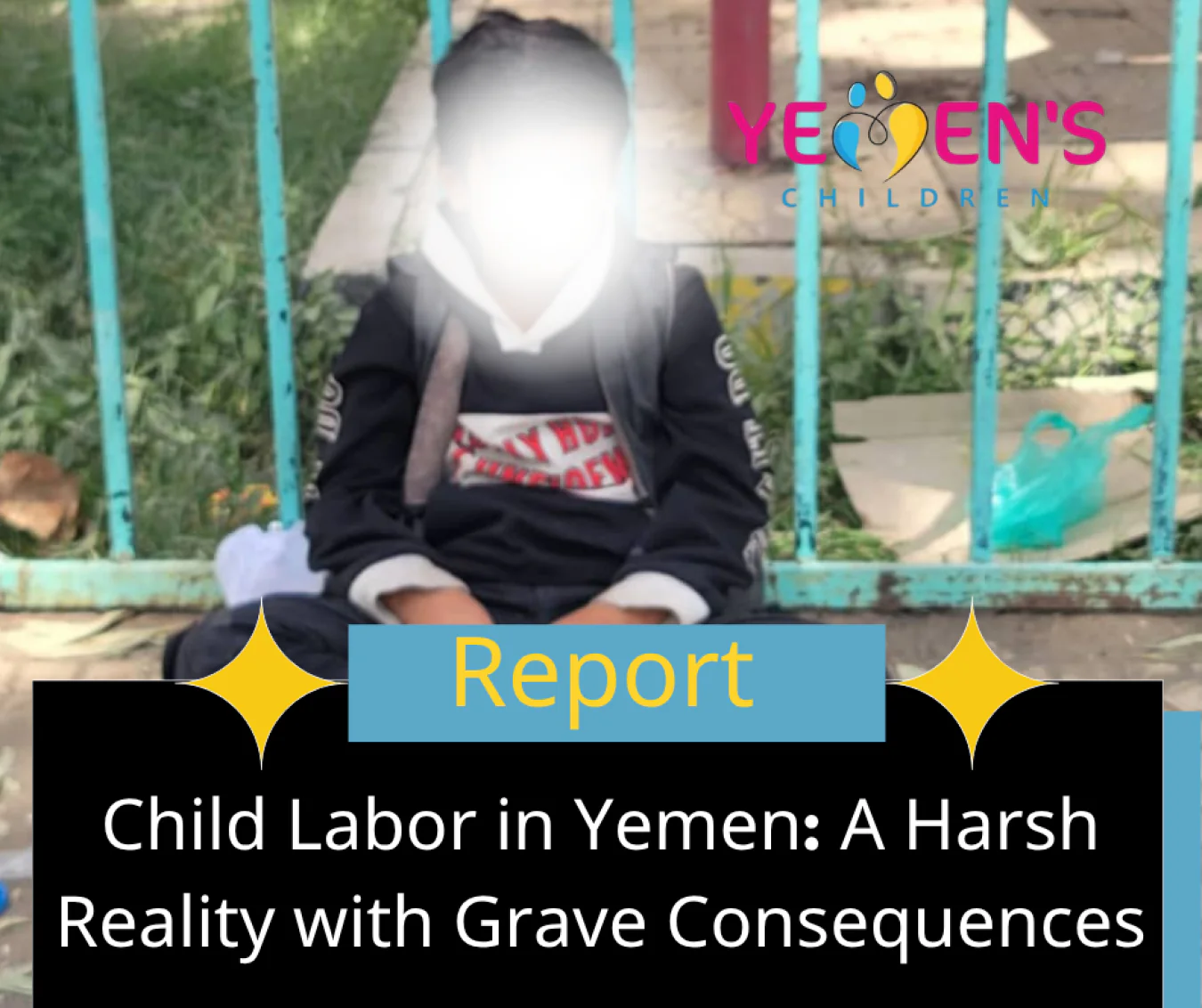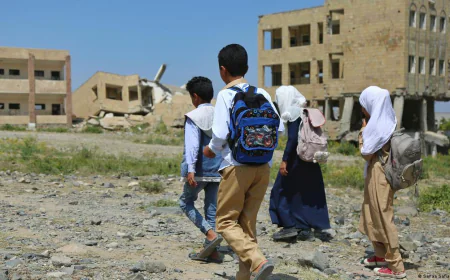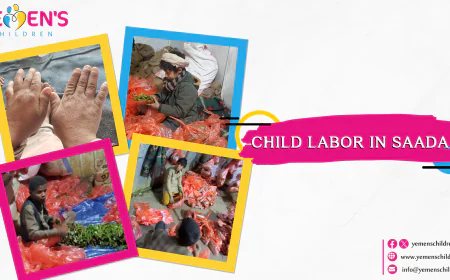Child Labor in Yemen: A Harsh Reality with Grave Consequences

Report: Reham AL- samawi
Child labor remains a global issue and a flagrant violation of children's rights. A 2020 report by the International Labour Organization (ILO) revealed that nearly 160 million children are engaged in labor worldwide—an alarming increase of 8.4 million over the previous four years. This marks the first rise in child labor figures in two decades. The report highlights stark disparities across the Arab region, with Yemen and Sudan registering the highest rates of child labor at 34.8% and 19.2% respectively.
According to the same report, the agriculture sector absorbs 70% of child laborers (112 million), followed by services at 20% (31.4 million) and industry at 10% (16.5 million). Child labor is three times more prevalent in rural areas (14%) than in urban settings (5%).
UNICEF's July 2021 report attributes much of Yemen's child labor crisis to the ongoing war, which has forced over two million children out of school. Most of these children urgently need emergency education support and sustainable crisis-time learning programs.
Yousef's Story
“Life turned upside down,” said 13-year-old Yousef, reflecting on how things changed after his father passed away. Forced to abandon school in sixth grade, Yousef began working his late father’s motorcycle taxi to support his family and pay rent, becoming the primary caregiver for his four siblings.
Bashar: Working the Scale at Sana’a University
Eleven-year-old Bashar spends his afternoons weighing passersby at Sana’a University. He told Yemen Children’s Platform that he works to help his father cover rent. Despite the hardship, Bashar continues his education in the fourth grade and dreams of becoming a doctor.
Anees: Eggs and Responsibilities
Ten-year-old Anees sells eggs on the streets near the Darari and Ma’allem roundabouts. He shares the burden with his brother to support their family of seven—including his father's expenses on qat and cigarettes. Despite difficult conditions, Anees still attends third grade.
Girls in the Workforce
Child labor isn’t limited to boys. Many girls under 16 are engaged in various forms of work.
“What is childhood? I’ve never known it,” said 11-year-old Fatima (name changed), who sells tissues on the streets between Reemas and Musbahy to support her divorced mother and three younger siblings. Fatima had to leave school due to financial constraints.
Nine-year-old Randa Saleh (name changed), a third grader, helps her father pay rent and fund her schooling by selling eggs at a local shop in the Sha’ub neighborhood. She has two younger sisters depending on her efforts.
Invisible Toll and Risks
The true number of child laborers—both boys and girls—remains unknown. But across various forms of labor, children face physical, psychological, and social dangers: broken bones, respiratory issues, skin diseases, and physical disabilities are common.
Yousef recounts multiple accidents while operating the motorcycle, including falls that left him with a broken arm and burns. Bashar has had his weighing scale destroyed and often isn’t paid for his services. Anees has had eggs stolen or broken, often by older children or careless customers. Fatima has faced harassment from men and navigates dangerous traffic daily. Randa too struggles with intense heat and breakages.
Child Labor and Loss of Education
Child labor is a major reason why millions of children in Yemen are out of school. A child-focused international organization estimates that 4.5 million Yemeni children are currently not enrolled in school—fueling illiteracy and slowing national development. The issue is highlighted annually on June 12, the World Day Against Child Labour.
Dr. Najat Saem, a professor of social psychology, notes that prior to the conflict, various official and non-governmental efforts—including the 2002 Child Protection Law (Law 45)—were instrumental in addressing child rights. But since the outbreak of armed conflict in 2011, those efforts have largely been suspended. In war, laws and human rights are often disregarded.
Saem warns that child laborers are vulnerable to physical, emotional, and even sexual abuse. Some are exploited in drug trafficking or forced recruitment by armed groups.
Psychological Consequences
Clinical psychologist Hashem Al-Hakimi emphasizes the serious cognitive, emotional, and health consequences of child labor. Physically, many children suffer from developmental issues, injuries, or exposure to toxic substances. Cognitively, they often drop out of school and fall behind in basic literacy. Emotionally, they may lose self-respect, disconnect from their families, or become socially withdrawn due to violence or abuse at work.
Hakimi warns of long-term psychological consequences including early aging, depression, social isolation, and fear—often stemming from physical, verbal, or sexual violence.
Toward Solutions
To protect Yemen’s children, Saem calls for an end to war, the restoration of government institutions, and increased public awareness of the importance of family planning and child welfare.
She urges civil society organizations to step up efforts to protect children and promote peace. Hakimi calls on local and international organizations to implement protective measures through existing laws and conventions. He stresses the need for poverty alleviation through community-driven support networks, identification of child labor cases, and collaboration with business leaders to fund protection programs.
Hakimi also urges the government to legislate a minimum working age and ban underage employment in public institutions. Enforcement mechanisms and penalties must be established. Additionally, the Ministry of Education should mandate compulsory schooling for all children.
He concludes with a call to human rights defenders, social workers, and civil society actors to monitor state institutions and investigate child recruitment into the military and security forces—a practice that has increased significantly in recent years.












